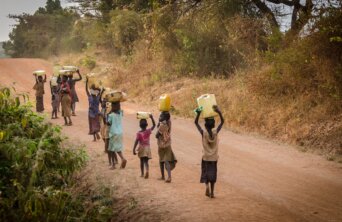- About
- Topics
- Story
- In-Depth
- Picks
- Opinion
- News
- Donate
- Signup for our newsletterOur Editors' Best Picks.Send
Read, Debate: Engage.
| topic: | Sustainable Development |
|---|---|
| located: | Thailand, India, Kenya, Mozambique |
| editor: | Bob Koigi |
The unprecedented population boom, increasing competition from different industries and the depletion of resources are among a cocktail of factors attributed to the water crisis that the world finds itself in. Today, 2.3 billion people live in water-stressed countries, while 1.4 billion, including 250 million children, are located in areas of high water scarcity.
Over 700 million people globally do not have access to clean drinking water, and another 700 million are at risk of being displaced by 2030 due to severe water scarcity.
Water availability and accessibility has affected almost all facets of these people’s lives and are fractured along gender lines. Women and girls collectively spend a collective average of 200 million hours every day collecting water, which involves walking long distances before finding a water point. This puts them at high risk of assault, fatigue and other health issues.
The world’s pursuit of achieving the UN Sustainable Development Goal (SDG) 6 - clean water and sanitation for all by 2030 - is way behind schedule with the situation exacerbated by climate change, escalating conflicts and emerging pandemics like COVID-19.
The world must act quickly; the cost of inaction would be devastating. Studies show that businesses are at risk of losing $300 billion if they do not innovate water use while other reports show that water scarcity can cost certain countries 6 percent of their GDP as well as consequential crises such as conflict and mass migration.
Fortunately, there is an innovation revolution taking place that is reversing the state of affairs and bolstering the water sector’s resilience and sustainability. It is being championed by startups, the private sector, governments and NGOs. And it is paying off.
From novel water-harvesting technologies in Asia that are leveraging local solutions to collect rainwater and store it for months, therefore provisioning households during dry spells and supporting agriculture, to apps and smart technologies in Africa that are ensuring judicious use of water and ultimately improving water security and enhancing access. These innovations are shaping the future of water.
As we celebrate World Water Day with a clarion call to accelerate change in solving the global water and sanitation crisis, the onus is on the global community to develop and upscale sustainable solutions that focus on promoting accessibility and quality while responding to the needs of everyone. Technology is positioning itself as one solution and should be embraced by all for the health of people and the planet.
Image by Jeff Ackley
